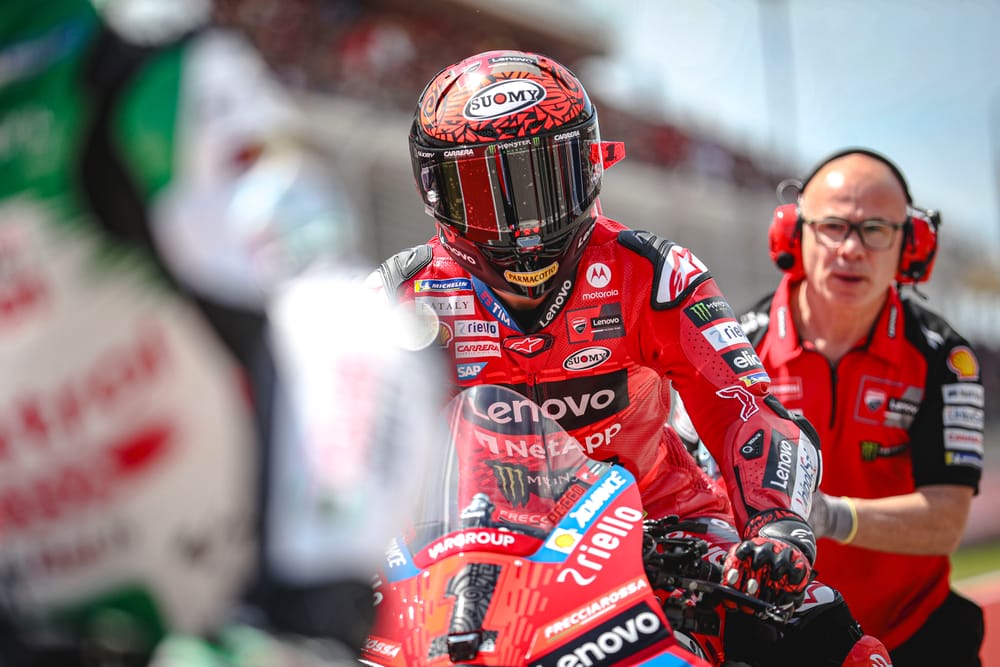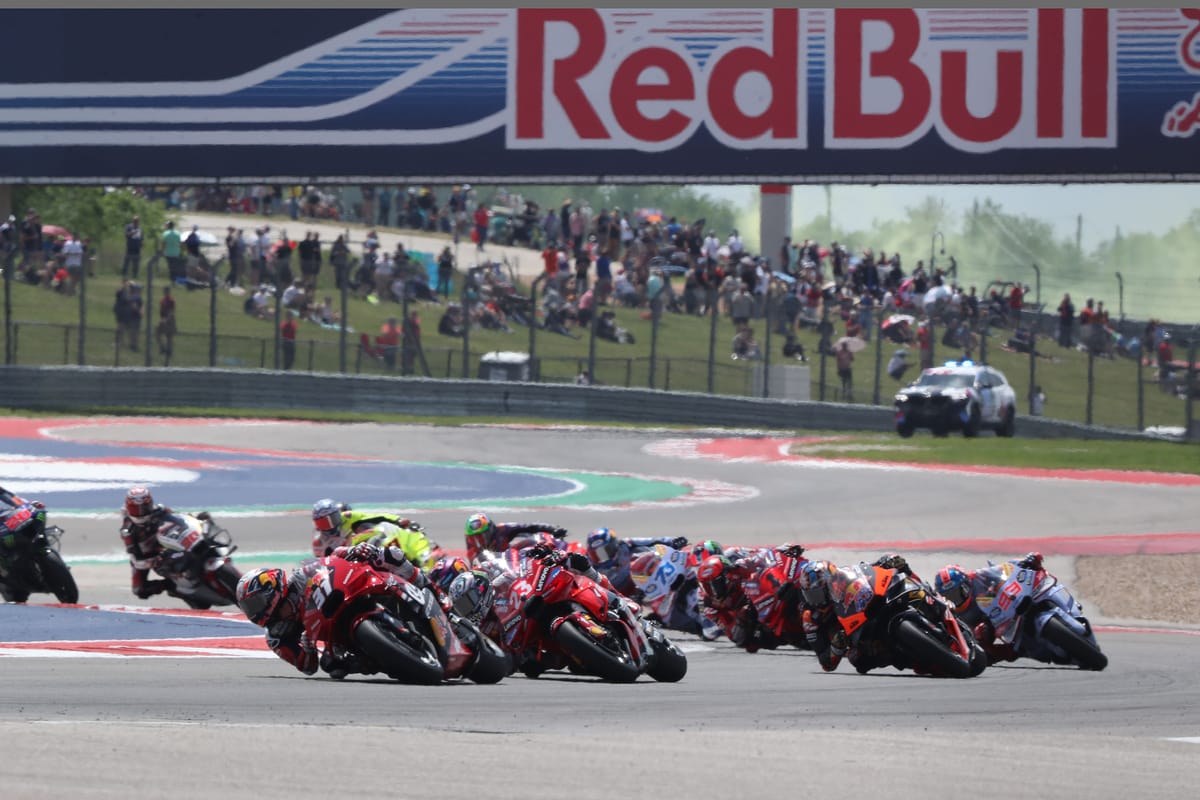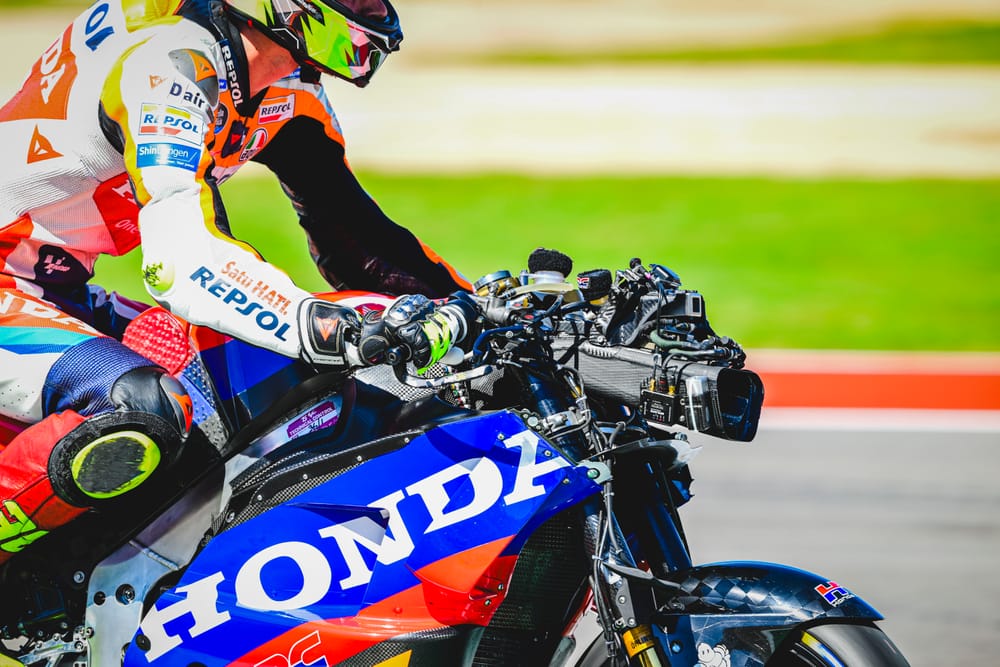A year and a day on, Alex Rins' second Grand Prix of the Americas win remains the unlikeliest in recent MotoGP memory.
There's some serious competition, and you don't have to go that far back for a clear bigger upset win - Jack Miller at Assen in 2016, also on a customer Honda. But the nature of Rins' COTA 2023 triumph firmly cemented him as not just a rider with an affinity for the Austin track but as a true savant of the very particular 5.5-km venue.
Both of his premier-class triumphs at COTA (where he also won in Moto3 and Moto2) took outside assistance in the form of the runaway leader crashing out - Marc Marquez in 2019, Pecco Bagnaia last year - but last year's Honda didn't belong in second place to begin with, and certainly not in a rider's third grand prix start on the bike. Across all the sprints and grands prix of the season, it would only lead 15 laps - 13 of those were courtesy of Rins at COTA.
With that background and a new, also clearly flawed Yamaha bike at his disposal coming to Austin the following year, was there about to be another form-busting extravaganza from the Spaniard?
As it turned out, no. Not at all. Even at a track he adores, Rins remains - even more so than Yamaha team-mate Fabio Quartararo - in no position to fight for anything more than 'moral' victories.
How fast was he?
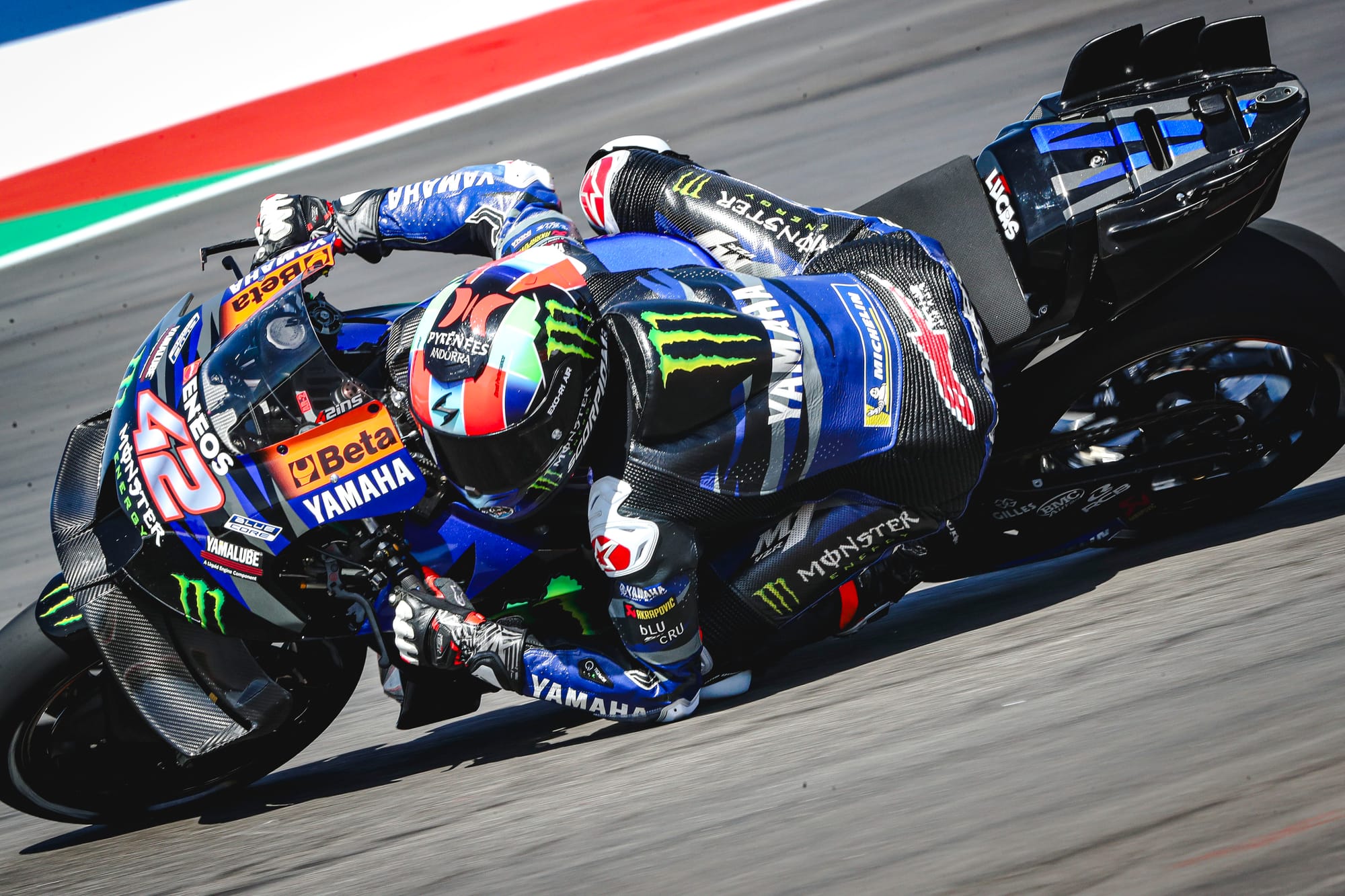
There's clearly a lot of respect in MotoGP for what Rins can do at the Circuit of the Americas, and on Saturday it came across in a rival's words after the sprint.
"Even with Rins, you could see that he was almost riding like he did last year, but he could not go very fast," said LCR Honda's Johann Zarco.
"But minimum five tenths faster than me - and five tenths every lap, you try to follow but then you get at the limit."
In other words, Rins was at least fast enough to have his replacement crash out while chasing him, reflecting the fact that while he wasn't as fast as he'd been on the 2023 Honda, he was at least comfortably clear of the currently dysfunctional 2024 Hondas.
The series' two Japanese brands look even meeker this year than they had done last year, with the so-called 'Japanese cup' - a derisive but useful reference to the Honda/Yamaha 'Class B' - increasingly a more realistic target for both sides.
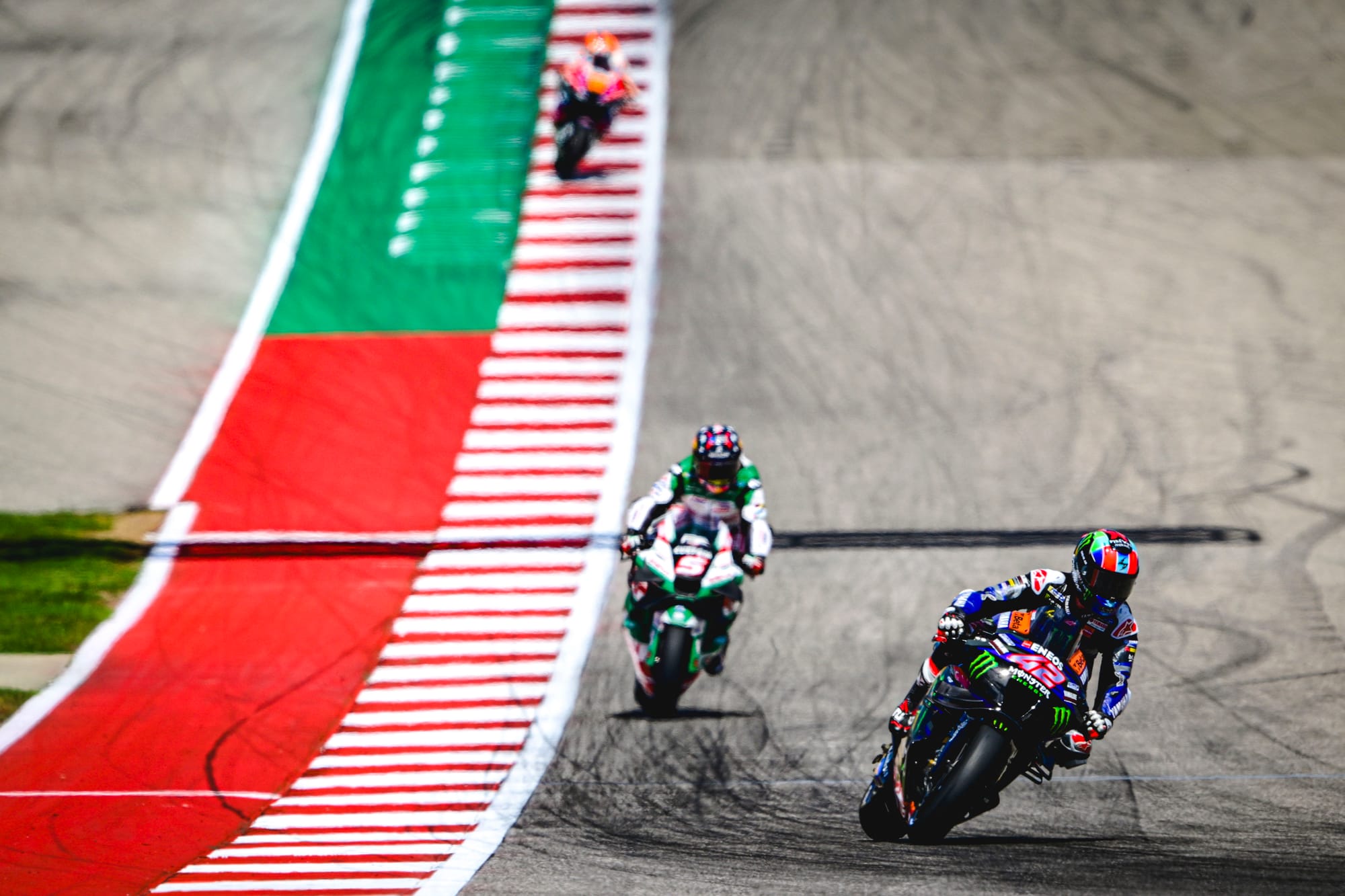
Rins, who has not really had the easiest time adapting to the M1 so far, wasn't feeling too competitive at the start the weekend. He's felt the M1 heavy underneath him, which at COTA was punishing him through the quick direction changes of the esses, and wasn't getting it stopped as well as he'd liked when the bike was at a straight angle.
But, over one lap at least, he was competitive relative to Quartararo. On Friday, that translated to a deficit of just under four hundredths. On Saturday in Q1, he was two tenths up - with the faint hint of a tow, though not necessarily from faster bikes.
"It was frustrating on Friday," Rins said of his mindset for the weekend at 'his' track.
"Then, when you understand as a rider, when I understood that it's going to be difficult, [that] we need to accept what we have and what we are doing, it becomes slightly different."
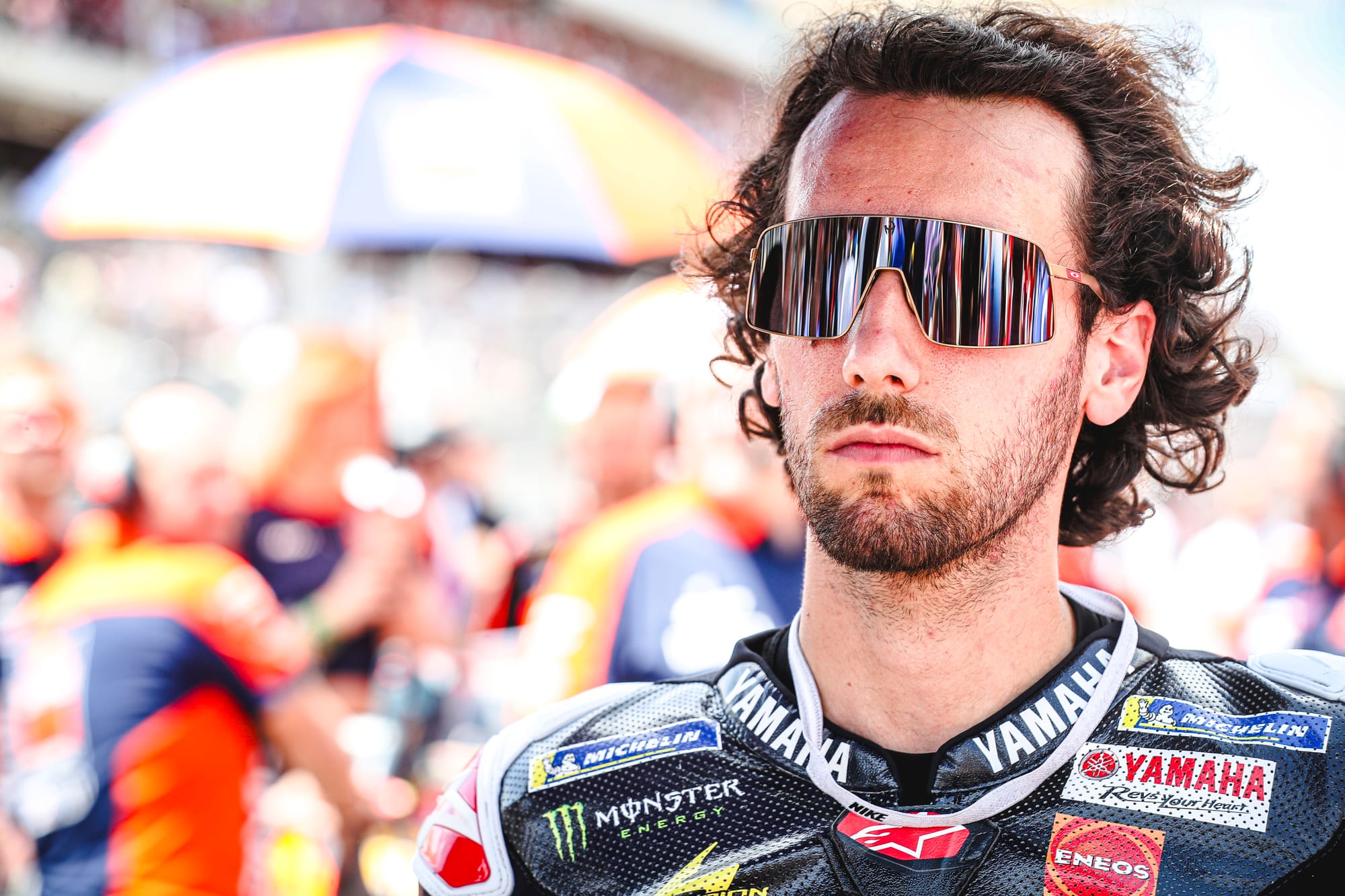
The actual races, though, suggested that Quartararo still has that extra margin in race pace, with Rins admitting that he needs to adjust his riding.
He wasn't helped by being relegated to last place on the opening lap - Jack Miller had a moment through Turn 2, Pecco Bagnaia checked up, Marco Bezzecchi had to pick up the bike and made contact with Alex Marquez and Rins, on the outside of the corner, rolled well wide with them to avoid a big mess.
He recovered soon enough to arrive at the back of Quartararo, but couldn't keep pace with the Frenchman. Quartararo was harrying Alex Marquez up ahead, Rins could only watch him from a couple of seconds back.
The main race was both more and less promising.
This time, a perfect opening lap, an audacious but remarkably clean divebomb on the inside of the tight Turn 1 promoted Rins into an immediate seventh.
But he was getting overtaken left, right and centre from there on, 11 riders (including Quartararo) having made their way past by the time Rins hit the deck on the 11th lap.
It was, Rins later explained, part of that current exploratory process between himself and Yamaha - a team-and-rider combination that isn't really fighting for anything right now.
"Today in the warm-up we tried, like, a completely different bike," he said. "To understand if that is the way we need to follow.
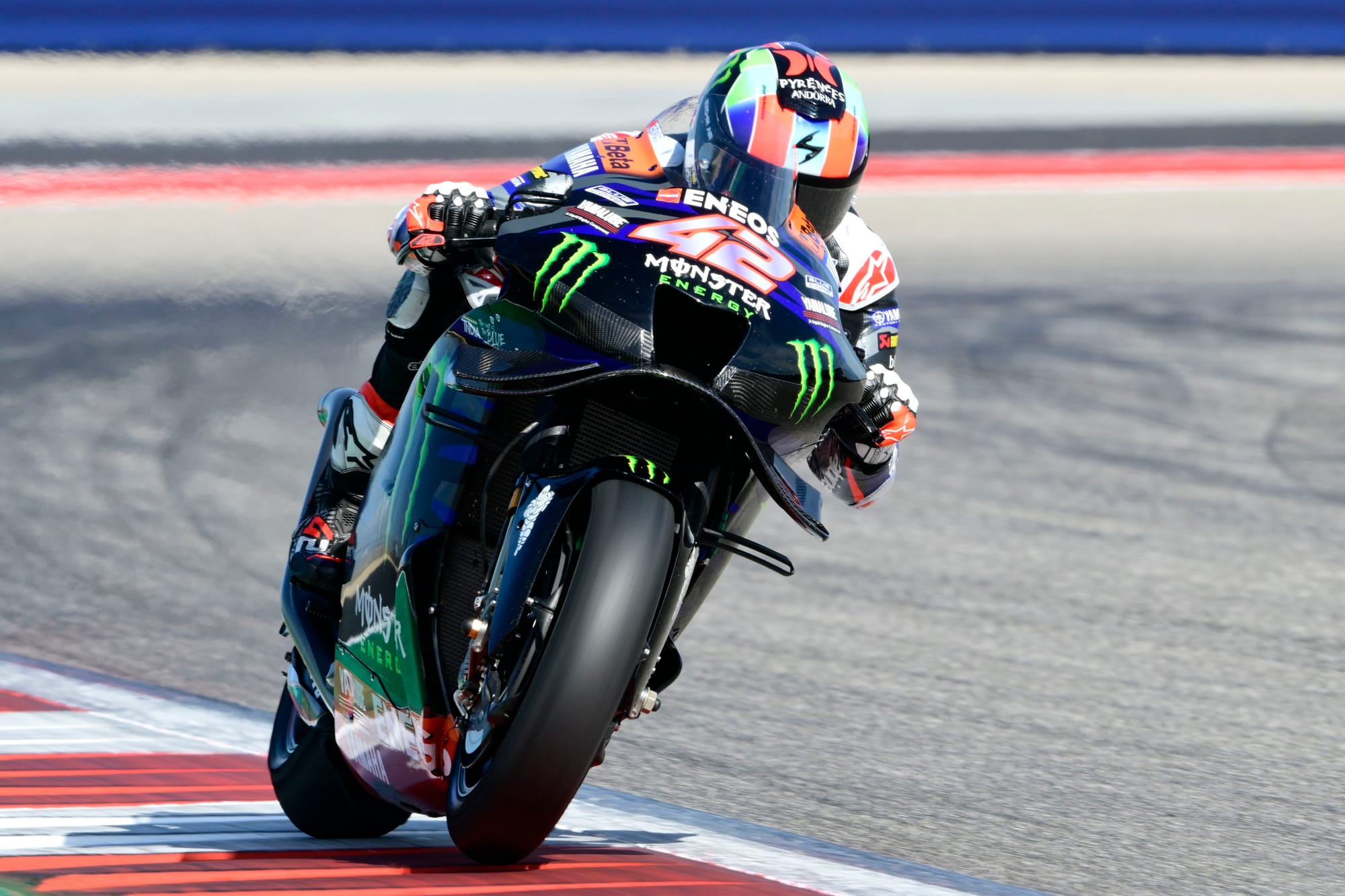
"The warm-up, only with 10 minutes, four laps. I didn't feel so much difference to yesterday, maybe a little bit better releasing the brakes in slow corners, corners where we were struggling yesterday.
"So we decided to keep the set-up for the race, and honestly it was a big mistake.
"It was a big mistake because our bike is usually quite heavy on the direction changes. But in the race with this set-up it was even worse, even heavier. So I was losing everything on the direction changes.
"And then I just did a small mistake on corner 15, there are some bumps on brakes, and maybe I went through one bump with a little more pressure on the front brake, and then I lost the front."
Perhaps Rins would've been further along in his Yamaha adaptation had it got a proper test under its belt out of the post-GP day it had booked at Portimao - instead of himself and Quartararo each logging single-digit laps due to weather.
Under the concession system, though, Yamaha is not limited by test days - just by tyres - so that running will presumably be compensated. And COTA, as scuffed as it was, made a decent case for why time is on Rins' side here.
It does feel like Rins hasn't quite had the start to the season he would've wanted, individually. But while Yamaha has already committed to Quartararo beyond 2024, and Rins remains a free agent, COTA showed he is close enough to where any rider mismatch isn't even in the top 10 of Yamaha's biggest issues.
